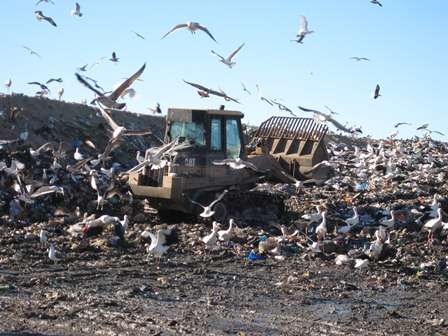Why are storks changing their migratory patterns? New project launched

In folklore, storks' strong white wings would carry babies to parents around the world. But since the mid 1980s increasing numbers of storks have stopped their annual migration from Northern Europe to Africa for the winter.
Instead, many are living in Spain and Portugal the whole year round – feeding on 'junk food' from rubbish dumps.
The project will track 15 adult white storks for a year using GPS loggers to investigate why they have changed their migratory behaviour. Researchers will investigate the link between climate change and feeding habits to predict future distribution of the species.
The birds have been caught in Portugal and tagged with loggers which will transmit five positions every day. This data will allow researchers to track the storks' movement between roosting and feeding areas and detect long and short distance flights.
Each tracker will also collect information about how much time the birds spend with their heads down, foraging for food.
Dr Aldina Franco, from UEA's school of Environmental Sciences, is leading the project.
She said: "These birds have changed their behaviour very radically. The number of storks spending their winter in Portugal has increased hugely from around 1,180 birds in 1995 to more than 10,000 in 2008 and numbers continue to grow."
"We know that instead of migrating to Africa for the winter, the storks feed on rubbish dumps which provide an abundant and reliable food supply. They're a very opportunistic and adaptable species so the availability of this 'junk food', is a likely cause. By tracing their movements, we will look at how important these rubbish dumps are for white storks in the wintering and breeding season.
They are also breeding in new areas in the north of the country – and we think this may be because the climate has changed to become more suitable for them. So climate change is another likely factor.
"Some birds seem to move much more than others and some use rubbish dumps more frequently than others. We will watch to see if they all decide to breed in Portugal or if some will leave Portugal to breed elsewhere in Europe."
Because the data will be transmitted through GSM or mobile phone technology, the scientists will be able to track the storks' movements while sitting comfortably in their offices at UEA.
"With so many migrants in decline, trying to understand how and why they are staying in one place is an important step forward in trying to understand what their long term future may be.
Nathalie Gilbert is a PhD student working on this project and she is interested in understanding the effects of landfill sites on the white stork's productivity and distribution.
She said: "Landfill sites in Portugal are scheduled to be gradually replaced by new facilities where food waste is handled under cover. This will cause a problem for the storks as they will have to find an alternative winter food supply. It may well impact on their distribution, breeding location, chick fledging success and migratory decisions."
The locations of the birds are being updated daily on the BTO website at www.bto.org/storks
Provided by University of East Anglia

















